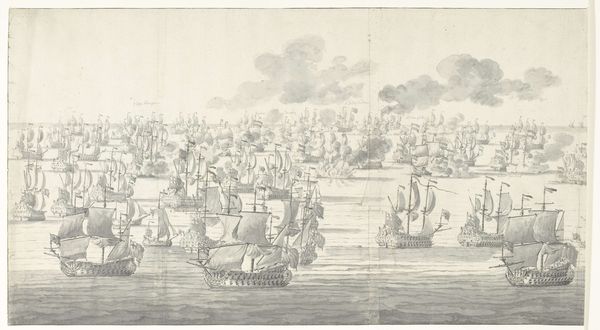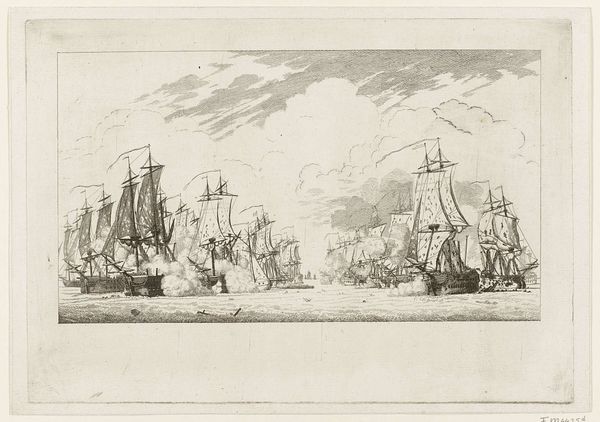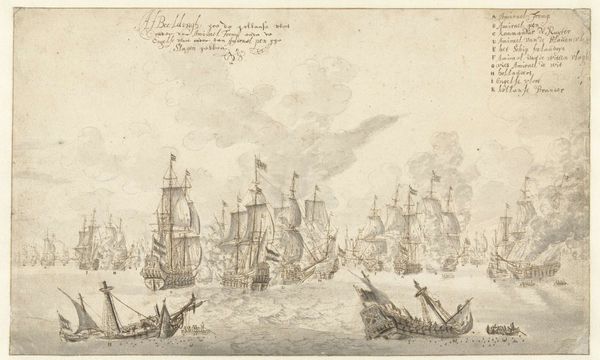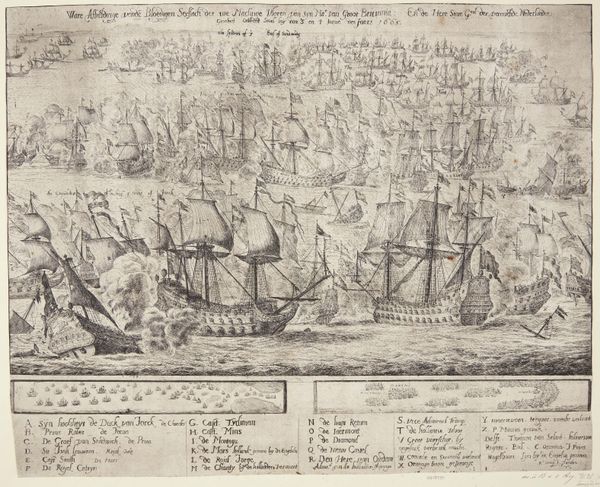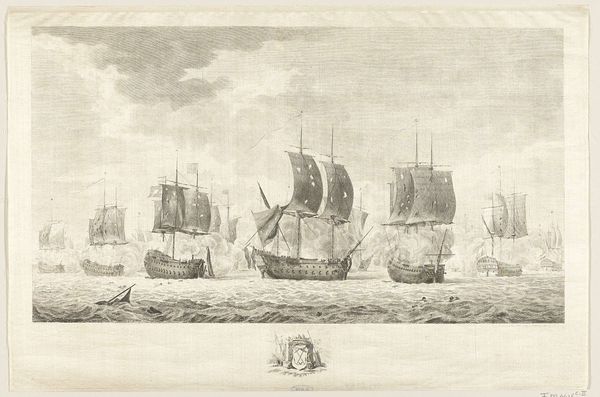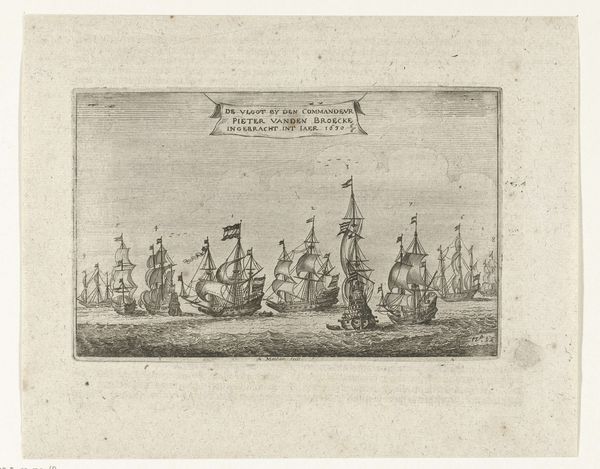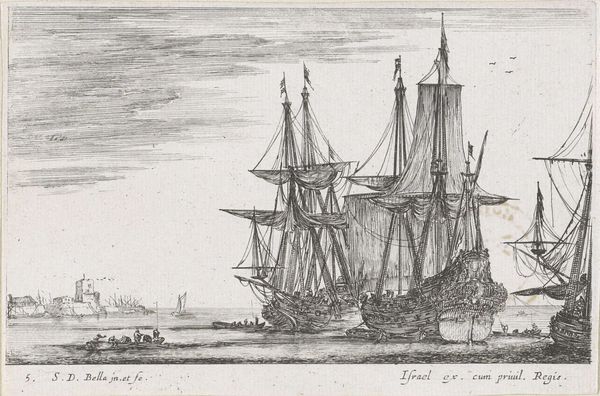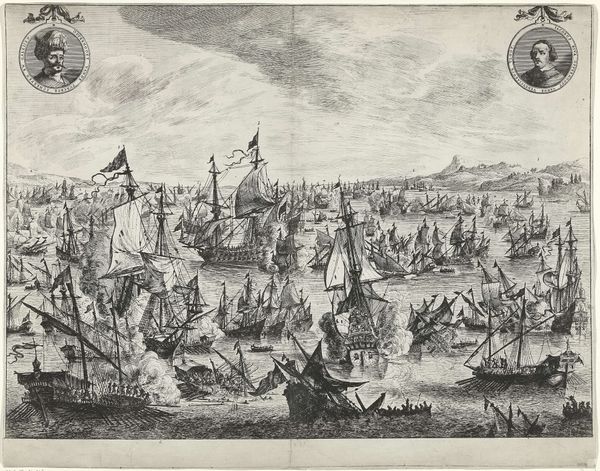
Bezoek van de Engelse koning Karel II aan twee Oost-Indiëvaarders tijdens zijn tocht op 27 Augustus 1681 Possibly 1681 - 1688
0:00
0:00
willemvandeveldei
Rijksmuseum
drawing, paper, pencil
#
drawing
#
baroque
#
dutch-golden-age
#
landscape
#
figuration
#
paper
#
pencil
#
history-painting
Dimensions: height 285 mm, width 460 mm
Copyright: Rijks Museum: Open Domain
Curator: What strikes me first is the incredible detail achieved with just pencil on paper; the artist really captures a sense of light reflecting off the water. Editor: Indeed. And that level of detail points to something beyond simple observation, wouldn’t you agree? I am especially thinking about the materials and how this type of work circulated among the Dutch elites, serving as records and status symbols. Let me introduce the piece: this is "Visit of the English King Charles II to Two East Indiamen during his Tour on 27 August 1681," created possibly between 1681 and 1688 by Willem van de Velde the Elder. It's currently housed in the Rijksmuseum. Curator: Knowing van de Velde, the choice of subject fits. The composition draws my eye all over the place – from ship to ship and that nice flat horizon line and very delicate light. The ships' placement seems deliberate, almost staged to convey an important state occasion. The various orientations, all precisely rendered... remarkable. Editor: Precisely! And think of the labor involved, both artistic and maritime. Van de Velde had the resources and the connections to observe and record such an event. This is not a mere landscape; it's a document of power, trade, and perhaps even royal propaganda aimed at local investors in the Dutch East India Company. The almost monochromatic scale helps convey the political magnitude more convincingly than color. The work's historical dimension adds layers to our appreciation, showing a network of colonial interest, material display, and artistic license intertwined. Curator: Your points certainly bring depth to what I initially perceived as simply masterful visual storytelling. Looking again, the multitude of boats aren’t just ships on water, they represent an interconnected web of economy and influence – not only that, but the line work seems less academic, but gestural, brisk. Perhaps drawn live as the event took place. Editor: Yes, exactly. By investigating the artistic choices—pencil drawing, historical setting, the networks sustaining the practice and their socio-economic impacts, the image of the King's visit becomes far more multifaceted. What was at first merely aesthetic in focus extends into a powerful representation of early capitalism and material culture, an important piece to contextualize for viewers today. Curator: I will say, it changed how I saw it too.
Comments
No comments
Be the first to comment and join the conversation on the ultimate creative platform.
